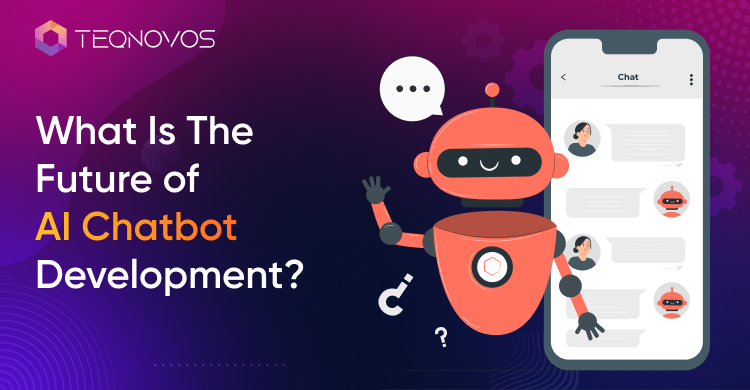7 Key Challenges Associated with IoT Implementation
IoT or the Internet of Things is a disruptive technology with the potential to revolutionize the world. Today, IoT has become quite popular due to its ability to facilitate digitalization across different industries. It allows businesses to digitalize their processes and make them more efficient.
Executives are eager to adopt and make the most of IoT for their organizations. However, there are certain IoT implementation challenges that one needs to take into account. Here, we will discuss all the key challenges you will likely face while implementing IoT for your business. Make sure to keep them in mind while formulating a strategy for IoT implementation.
Why is IoT Popular Among Businesses?
The most significant advantage of IoT is that it allows businesses to automate various tasks. As a result, it becomes possible to achieve higher operational efficiency while reducing labor costs.
The demand for IoT solutions is on the rise, which results in the expansion of the global IoT market. According to Allied Marketing Research, the size of the global IoT market will grow from $740 billion in 2020 to $4421 billion in 2030 at a CAGR of 19.67%. It clearly indicates that the demand for IoT systems is only going to increase in the coming years.
When it comes to businesses, IoT is one effective way to streamline operations, deliver services effectively, and ensure better customer satisfaction. Here are the key reasons why IoT is popular among businesses:
- IoT helps to track repetitive and redundant tasks for preventing underutilization of resources.
- With IoT systems, businesses collect lots of data related to their processes, machinery, and other resources. It is possible to process the raw data to extract useful information for uncovering new business opportunities.
- IoT allows businesses to set up extremely powerful surveillance networks that utilize cameras and different sensors. Real-time surveillance allows a business to strengthen its security and minimize the chances of mishappenings.
- The data generated by IoT devices help to generate useful insights, which allows business owners to get a clear picture of what’s happening in their organizations. Thus, they will be able to make more informed decisions.
7 Major IoT Implementation Challenges
Development and deployment of IoT projects are not easy. You need to work with multiple teams to ensure successful IoT implementation.
It doesn’t matter how powerful operational and IT teams are working with you on your IoT project. If you do not take into account the most common challenges associated with IoT implementation, your strategy may prove ineffective.
Here are the most significant IoT implementation challenges.
1. High Initial Investment
Developing an IoT system for a business requires hefty investments. The reasons for the high cost of IoT implementation include the use of various hardware and software components and the need for IoT experts.
Estimating the overall budget for the project might be overwhelming, especially if you have limited experience with IoT implementation. It’s imperative to estimate the project cost at the beginning so that it becomes easy to decide whether your business is up for it.
What happens usually is that businesses like the idea and the outcomes of an IoT project, but the investment required for the project is simply too high. Therefore, dropping the IoT project idea becomes the best option.
One effective way to overcome the challenge of high initial investment is to break a big IoT project into smaller projects. Set clear goals for each project and estimate the cost of implementation. It becomes possible to develop and launch an IoT system in phases without overshooting the budget.
2. Hardware and Software Compatibility
Data collection in IoT happens through various sensors, PLCs, and internet-enabled devices. The hardware components need to work in sync with each other and should be compatible with the selected software. However, devices from one manufacturer may not be fully compatible with devices from other manufacturers. This produces errors in the system and affects the IoT implementation process.
Additionally, the availability of hardware can also be an issue. You may have to spend extra to source hardware that is not easily available.
The choice of software is as important as the hardware. Generally, it’s best to choose software that is easy to integrate and requires limited maintenance. Moreover, it’s crucial to make sure that the software you pick works harmoniously with the physical devices of the IoT system. Any compatibility issue with the hardware or software will hamper the effectiveness of the whole system.
While planning the IoT project, you need to pay special attention while choosing the best hardware and software components. It is advised to examine each physical device and software carefully beforehand to avoid conflicts during the implementation.
3. Security Threats
In an IoT system, all the devices are connected to each other and the data is shared over the Internet. However, the rising threat of cyberattacks is a major concern for business owners. With IoT, various assets and devices of your company are connected to the internet, they can be exploited by hackers by launching a cyber attack.
While implementing an IoT solution, you need to follow the best security practices to maximize security against cyber threats. The best way to ensure the security of your IoT system is to choose the most effective security mechanisms during the planning phase.
4. Data Analytics
Data analytics is among the most essential parts of an IoT system. The key purpose of any IoT system is to collect data from various devices and sensors. The data is generally available in raw form and has little value. You cannot directly use this raw data to extract meaningful information. So, what you need is a powerful data analytics platform to process huge amounts of data.
At present, several IoT data analytics platforms are available in the market that you can integrate with your IoT system. You need to perform comprehensive research to find the best data analytics platform that enables your IoT system to process data efficiently.
5. Deployment
Not only designing an IoT system is difficult but its deployment can be even more toiling. IoT system requires the installation of several electronic devices. However, when it comes to businesses operating in industries like manufacturing, installation, and maintenance of electronic devices is challenging.
The chances of device failure or malfunctioning are high when installed in harsh environments, such as inside industrial freezers or the areas surrounding an industrial furnace. Ensuring the safety of IoT devices is crucial to ensure the proper functioning of the whole IoT system.
The most appropriate action for overcoming this challenge is to take the help of experts who have experience deploying IoT systems in harsh environments.
6. Incorrect Data Capture
Another challenge that you face while implementing an IoT system is the inaccuracy of captured data. Despite following the best development and deployment practices, an IoT system may face the issue of incorrect data capture.
There can be multiple reasons for the generation of incorrect data, such as minor faults in a device or the inability of the software to handle large amounts of data in real-time. In some cases, it is even difficult to identify the source of incorrect data, which makes things worse.
To tackle this challenge, you need to take preventive measures, such as the use of high-quality hardware and software that can perform optimally even when put under extreme conditions.
7. Regular Maintenance of IoT Systems
Maintenance can become an issue in two cases; when you do not have an effective maintenance plan or the IoT system is fairly large and complex. Regular maintenance is critical to ensure the smooth operation and longevity of the IoT system.
Maintenance of IoT endpoints is difficult in the sense that most of them require physical access. Whether you need to check an endpoint or replace a device, a physical visit becomes imperative. Imagine checking hundreds of checkpoints physically.
To make the maintenance of IoT systems easier, it’s good to automate tasks using various tools and software. There are many advanced tools that make it possible to check and troubleshoot devices remotely.
Wrapping it All Up
The implementation of IoT systems is certainly a tough row to hoe, but it’s rewarding at the same time. By leveraging IoT, businesses can automate their processes, bring down operational costs, achieve optimal resource utilization, and make better decisions.
There are multiple challenges in IoT implementation that we have discussed above. You may have to face them while developing and deploying an IoT system for your business. However, if you know how to implement IoT the right way and prepare yourself for the most common challenges beforehand, you will be able to streamline the whole implementation process. Make sure to go through each implementation challenge carefully to devise the best course of action.
Leading IT services companies, like Teqnovos, let you consult their IoT experts to find the best ways to utilize IoT technology for your business. They will assist you with the preparation and implementation of an effective strategy for your IoT project.
















